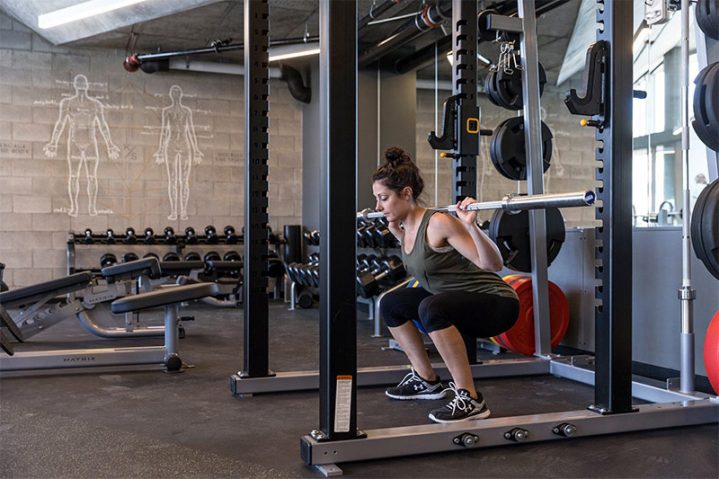
People go to the gym for all sorts of reasons, depending on their fitness goals. Despite the various reasons people hit the weight room, however, there are two points that pop up time-and-time again. What are the two main reasons? The two main reasons involves building muscle and losing weight to improve their overall health.
Sounds pretty easy, right? Well, not exactly. One of the main reasons why so many people battle with weight loss is not because they’re lazy or lack proper resources, but because their muscles have become resistant to insulin. This means the more sugar you eat, the harder your body has to work to absorb those excessive calories. As a result, the body then diverts the excessive calories to fat cells, which can contribute to obesity.
While living in Oregon has its benefits, including outdoor activity and local gyms, putting in the extra effort is important to being successful. In the weight room, for example, you need to develop a plan that will assist you along the way.
When it comes to building muscle and bulking up, rushing into a weight room without a strategy is not an ideal technique. Why? It all comes down to injuries. In other words, the chances of getting injured increases substantially if you aren’t sure what you’re doing. You need to be targeting all of the major muscle groups but you need to be doing it effectively, with good form. If you follow the tips listed below you’ll be able to pack on lean muscle a lot easier and be well on your way to achieving your fitness goals.
Don’t Let Stress Weigh You Down: Stress comes in many different forms – whether financial, physical, or emotional. Whatever the case, stress not only has the ability to lower your confidence level, it also has the ability to kill muscle gains dead. This means that all the hard work you’ve invested in the weight room can be gone within a matter of a few stressful days. So, how does stress kill muscle gain? It starts with cortisol – a type of catabolic hormone.
This hormone is released during times of stress and can stop the process of muscle gain dead in its tracks. In some cases, one might be able to argue that stress, in fact, is the number one killer of muscle development. Arguments at home, client demands at work, skipped meals, school, and daily chaos can all contribute to stress and hormone release. Sleep deprivation or insomnia can also contribute to unnecessary stress on the body. Make sure you get at 7-8 hours of sleep each night. If you aren’t getting 7-8 hours of sleep, then start going to bed earlier or consider seeing a doctor. Another way you can get rid of stress is by visiting a spa or getting a massage after your intense workout. Just do something that helps you relax.
Eat High-Quality Food: Consuming high-quality food is key for building muscle. Protein, for instance, not only helps the body repair and rebuild tissues, it can also help your body raise good cholesterol. That’s why nutritionists recommend consuming a minimum of 0.8g protein for every kilogram of body weight. This advice, however, can only be applied to average-sized individuals. What does this mean? It means as you become more active and your muscles become more developed, so does your protein consumption. Remember, the body needs a sufficient amount of protein to keep up with all the physical activities you’re putting it through.
The only problem with this method, however, is that not all protein is created equal. To put it another way, not all protein consumed helps the body build muscle. To maximize muscle growth, just remember, the better the quality, the more beneficial it is to the body. Things like eggs, milk, fish, and other lean meat are all good sources of protein for the body. If milk isn’t an option for you due to digestive issues, then stick to protein shakes. They’re just as good – if not better – and have the same the effect on the body.
Monitor Your Cardio Workout: Although cardio has a lot of great benefits, too much of it isn’t good for you. Intense cardiovascular exercises, in particular, use a lot of energy, which can reduce muscle mass in other areas of the body. For this reason, all the cardio exercises you’re doing throughout your workout may need to be reduced to prevent muscle loss. How do you know if you’re doing too much cardio? Ask yourself, does your body desperately hold onto fat? If the answer is “yes,” then you need to change up your routine.
That’s because when it comes to shedding fat, a lot of people just increase their cardio exercise. Make sense, right? Especially since technology has begun to help us monitor our health and wellness to help us live a healthy lifestyle. This means that machines like the treadmill also plays a major factor in our muscle growth. The longer you run on the treadmill, the more calories you see being burnt throughout the process. So in a way, it encourages you to continue working out.
Unfortunately, the positive effects of cardio workouts don’t last for long. In other words, once you’re finished with your workout, your body, then returns to its natural state. This means that if cardio workouts are your go-to-exercises, then you’ll have to do more in order to see results. The only problem is increased cardio leads to decreased muscle mass.
Moving forward, if you plan on doing any cardio exercises and you’re worried about the possibility of losing muscle, just practice monitoring the frequency of your workout. To help balance things out, make sure you consume lots of high-quality carbohydrates and protein after your cardio workouts. Remember, cardio training is great for your overall health, but balancing it out with other alternative workouts will help you achieve your fitness goals faster.




